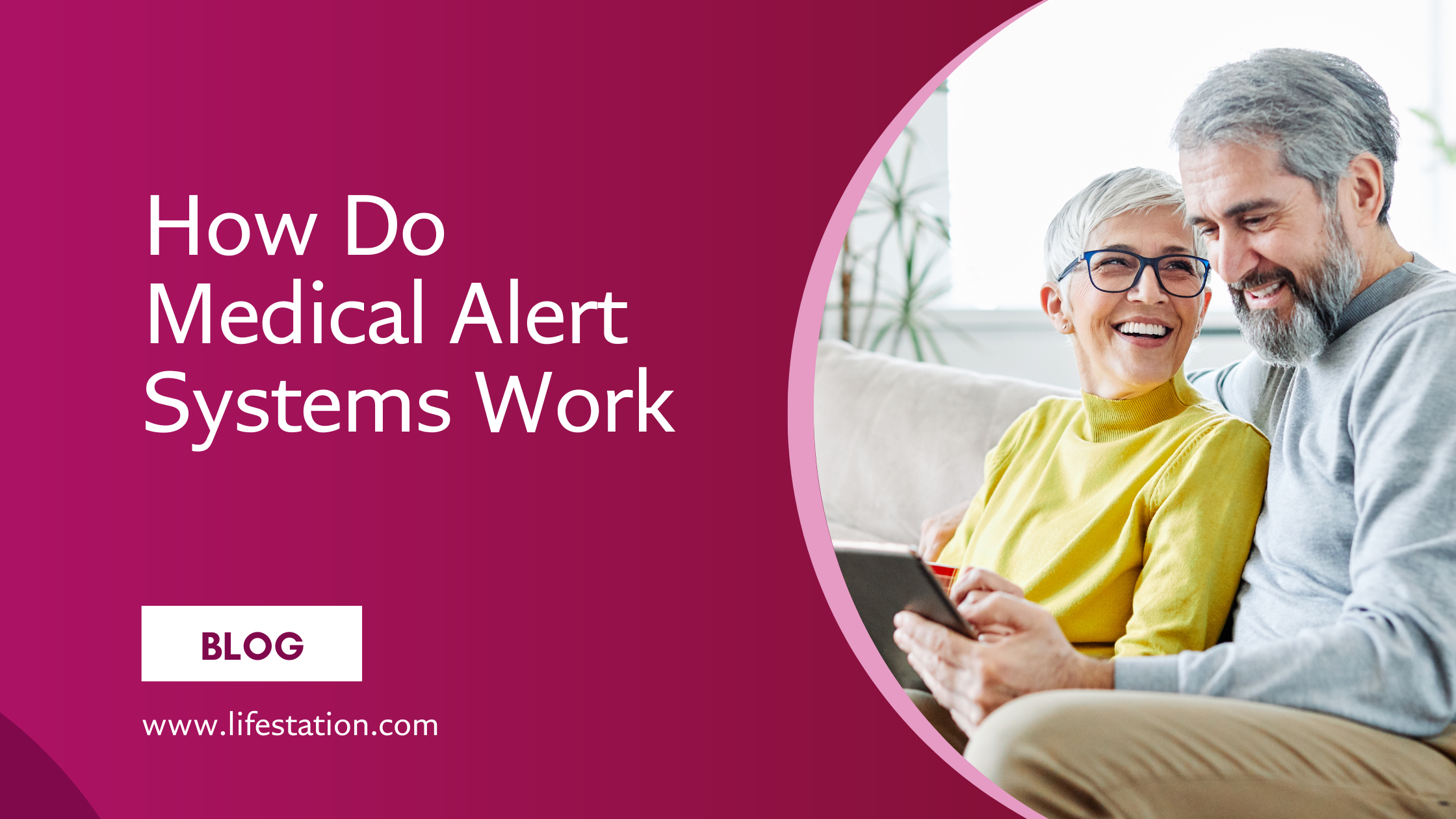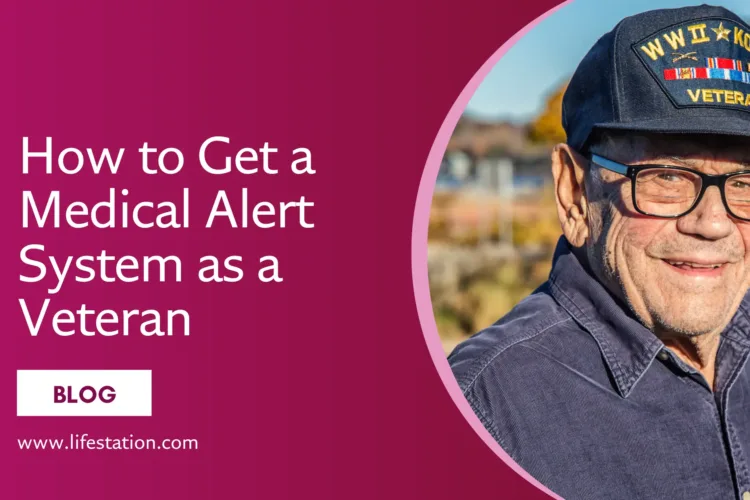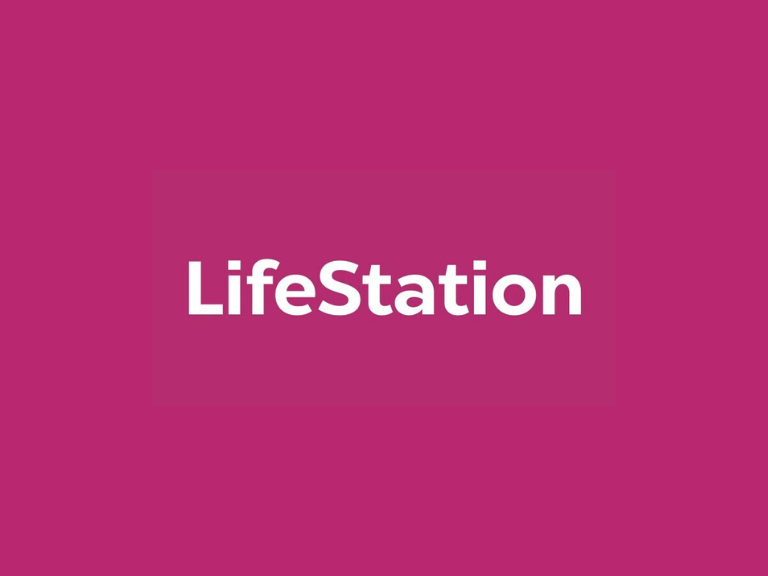Peace of Mind & Independence is One Call Away
(888) 493-1475 - Click to Call get a FREE MONTH of service.

Curious about how medical alert systems work to keep you safe? These devices are designed to provide immediate assistance at the push of a button, connecting you to emergency help when it’s needed most. In this guide, we’ll break down how medical alert systems work, including the technology behind them and how they ensure peace of mind for you and your loved ones.
Table of Contents
Many of us worry about the emergency well-being of our loved ones, especially as they age. Statistics show that falls are a significant concern, with the CDC reporting that one in four adults aged 65 and over falls each year¹. These falls can have serious consequences, leaving individuals feeling vulnerable and unable to get help independently.
Medical alert systems address these worries by offering peace of mind and immediate assistance in critical situations. They empower your loved ones to call for help quickly and easily, even if they’re unable to reach a phone, providing a crucial safety net and encouraging independence.
What Is a Medical Alert System?
Medical alert systems typically consist of a wearable device (often a pendant or bracelet) with a built-in medical alert button. When pressed, the button sends a signal to a monitoring center staffed by trained professionals 24/7. These professionals assess the situation, dispatch emergency services if needed, and even contact designated family members.
Mobile medical alert systems are similar but use cellular technology to connect directly to the monitoring center, eliminating the need for a base unit at home. Some medical alert systems also offer automatic fall detection, which can send an alert even if the user is unable to press the button themselves.
What Are the Components of Medical Alarm Systems?
Medical alarm systems typically have several key components that work together to ensure prompt response and support. Below are the main components of a medical alarm system:
Personal Emergency Response Device (Transmitter):
- The personal emergency response device, often worn as a pendant or wristband, is the primary interface between the user and the medical alarm system.
- It is equipped with a button that, when pressed, sends an alert signal to the monitoring center, indicating that assistance is needed.
- Some devices also incorporate fall detection sensors and GPS tracking capabilities to improve functionality and safety.
Base Station:
- The base station serves as the central hub of the medical alarm system, receiving and transmitting signals between the personal emergency response device and the monitoring center.
- It is typically connected to a landline telephone or cellular network to facilitate communication with the monitoring center.
- The base station may also include a two-way speaker system, allowing users to communicate directly with operators at the monitoring center in an emergency.
Monitoring Center:
- The monitoring center is staffed 24/7 by trained operators who receive and respond to emergency alerts from medical alarm systems.
- Upon receiving an alert, operators assess the situation, communicate with the user, and coordinate the appropriate response, including contacting emergency services or notifying designated caregivers.
- The monitoring center is equipped with specialized software and communication tools to efficiently manage incoming alerts and ensure timely assistance for users in need.
Emergency Response Services:
- The monitoring center dispatches appropriate emergency response services to the user’s location in a medical emergency.
- This may include contacting local paramedics, firefighters, or police, depending on the nature of the emergency.
- Emergency response services are typically provided by trained professionals equipped to assess and address various medical situations.
User Information and Profiles:
- Medical alarm systems maintain detailed user information and profiles, including medical history, emergency contacts, and any specific instructions or preferences the user provides.
- This information is essential for operators at the monitoring center to quickly assess the situation and provide appropriate assistance tailored to the user’s needs.
Backup Power Supply:
- Medical alarm systems often incorporate backup power supplies such as batteries or generators to ensure uninterrupted functionality.
- These backup power sources are designed to activate automatically in the event of a power outage, ensuring that the system remains operational and users can still access assistance when needed.
How do Medical Alert Systems Work?
Medical alert systems offer a simple way to summon help in an emergency.
- When you or your loved one feels unsafe, simply press the button on the wearable medical alert device (often a pendant or bracelet). This action instantly connects you to a 24/7 monitoring center staffed by trained professionals.
- These trained specialists answer your call within seconds, ready to assess the situation and provide calm, reassuring assistance. They will ask questions to understand the situation and determine the best action.
- If an emergency is suspected, they will immediately dispatch emergency services (police, fire department, or ambulance) to your exact location using GPS technology.
- They will also contact designated family members, informing them and offering emotional support.
What About Real Life Scenarios?
If the breakdown of how a medical alert system works seems too simplistic, then here is an example of a real-life scenario.
Background:
Ms. Johnson is an 82-year-old widow who lives alone in her suburban home. She has arthritis and has a history of occasional falls. Concerned about her safety, her family recently enrolled her in a monitored medical alert system.
1. Fall Detection Activation:
One evening, while walking to the kitchen to prepare dinner, Ms. Johnson loses her balance and falls to the floor. Her medical alert pendant, equipped with fall detection technology, detects the sudden impact and automatically triggers an alert to the monitoring center.
2. Monitoring Center Response:
At the monitoring center, an operator receives the fall detection alert and immediately accesses Ms. Johnson’s profile, which includes her medical history and emergency contacts. The operator attempts to communicate with Ms. Johnson through the two-way speaker on her pendant. When there is no response, the operator dispatches emergency services to Ms. Johnson’s GPS location.
3. Emergency Dispatch:
Local emergency services, alerted by the monitoring center, quickly respond to Ms. Johnson’s home. They arrive within minutes and find Ms. Johnson lying on the kitchen floor, unable to get up due to pain in her hip. The emergency responders are readily prepared to offer immediate medical assistance due to the information provided by the monitoring staff. Assessing her condition and administering pain relief,
4. Communication with Family:
Simultaneously, the monitoring center contacts Ms. Johnson’s designated emergency contacts, informing them of the situation. Ms. Johnson’s daughter lives nearby and rushes to her mother’s side to support and accompany her to the hospital.
5. Hospitalization and Follow-Up:
After stabilizing Ms. Johnson, the emergency responders transport her to the hospital for further evaluation and treatment. The medical staff at the hospital review her medical history, including details provided by the monitoring center, and conduct diagnostic tests. They diagnose Ms. Johnson with a fractured hip and admit her for surgery.
6. Recovery and Support:
Following successful surgery, Ms. Johnson undergoes rehabilitation to regain mobility and strength. Throughout her recovery process, she wears her medical alert pendant, providing her with reassurance and immediate access to assistance if needed. Her family expresses gratitude for the swift response of the medical alert system, which they credit with potentially saving Ms. Johnson’s life.
Unfortunately, today, many crises and emergencies occur with senior citizens that are dealt with too late. Acknowledging potential dangers and explaining the process can hopefully turn the tide to offering seniors and their loved ones more peace of mind when it comes to their imminent safety and security.
Why Choose LifeStation?
LifeStation offers more than just a medical alert system. It’s a comprehensive package designed to provide peace of mind and comprehensive support for you and your loved ones:
Unwavering Commitment
- Peace of mind with best-in-class service and experience: LifeStation prioritizes quality and customer satisfaction.
- Family-owned and operated: With over 40 years of experience, LifeStation brings a personal touch to their service.
- Trusted by leading institutions: Partnerships with reputable organizations like Aetna and Kaiser Permanente demonstrate trust and industry recognition.
Unmatched Service and Support
- 24/7 Emergency Help: LifeStation’s award-winning specialists answer your call within seconds and are ready to dispatch help.
- 100% US-based Monitoring: Dedicated monitoring centers in the US ensure a reliable and responsive network.
- Fastest Response Time: Boasting the fastest response time in the industry, LifeStation provides swift emergency assistance.
- Industry-Leading Customer Service: LifeStation prioritizes customer satisfaction with award-winning service and certified professionals.
- 30-Day Money-Back Guarantee: Try their system risk-free, with a full refund if unsatisfied.
Advanced Technology and Features
- Where’s Mom? Just Ask Alexa: Integrate LifeStation with Alexa for convenient voice-activated monitoring and location tracking.
- Find My Loved One: Locate your loved one instantly with a simple text message, offering additional peace of mind.
LifeStation means choosing a comprehensive solution beyond a basic medical alert system. It signifies a commitment to peace of mind, exceptional service, and innovative technology for you and your loved ones.
Conclusion
In conclusion, medical alert systems are a straightforward and reliable solution that has been proven time and again to save lives. With each success story, the efficacy of these systems becomes more apparent, offering seniors and their loved ones the priceless gift of precious time together.
By understanding how medical alert systems function, we can dismantle the stigma associated with needing assistance and instead embrace the empowerment they provide. These systems offer a renewed sense of independence, allowing seniors to continue living on their terms while knowing that help is readily available at the touch of a button.
As we breathe fresh life into the advanced years, medical alert systems are a beacon of hope and security, encouraging peace of mind for seniors and their families. With advancements in technology and a growing awareness of their benefits, these systems are poised to play an increasingly vital role in promoting safety, well-being, and quality of life for older adults. See our blog on how to get a medical alert system for more information.
What is a personal emergency response system, and how does it work?
Personal emergency response systems are devices that summon help in emergencies. Most medical alert systems have a wearable emergency button (medical alert device) and/or a base station.
What are the advantages of mobile alert systems?
Mobile alert systems allow users to summon help inside and outside their homes. Equipped with GPS technology, these mobile systems ensure that emergency medical services can locate and assist individuals wherever they are.
Are unmonitored medical alert systems reliable?
Unmonitored medical alert systems connect users directly to designated contacts in case of emergencies, bypassing a monitoring center. While they offer independence, they do not provide the same level of assurance as monitored systems, which involve professional emergency medical services. See our blog on monitored vs unmonitored medical alert systems for more information.
Do all medical alert systems cover fall detection?
Not all medical alert systems come with a fall detection device. However, many of LifeStation’s devices offer automatic fall detection capabilities. Our device alerts our monitoring center if the user cannot press the emergency button. Check out or blog on the best medical alert systems with fall detection for more information.
How can I find the best medical alert system from a reputable medical alert company?
Look no further than LifeStation! With 24/7 Emergency Help and 100% US-based Monitoring, we are trusted by the best in the industry due to our family-owned history with 40 years of experience. We have the fastest response time, and if all this is not already enough, then we offer a 30-day money-back guarantee.
What features should I look for in the best medical alert systems to ensure comprehensive coverage?
Prioritize features that offer comprehensive protection. Look for medical alert devices with reliable emergency response capabilities, including 24/7 monitoring services. Additionally, consider fall detection, GPS tracking, two-way communication, and water-resistance to ensure optimal safety and peace of mind.
- Older Adult Falls Data, Centers for Disease Control and Prevention https://www.cdc.gov/falls/data/index.html
Get the Best in Medical Alert Services Now
Request Medical Alert Information
By clicking the Request Brochure button above, you are providing an electronic signature certifying that our company and our affiliates have your consent to contact you at the provided telephone number using an autodialer or prerecorded message in accordance with our Terms of Use. Please note that you are not required to purchase anything from the companies that may contact you. Healthcare providers and anyone interested in getting more information about working with LifeStation, please contact LifeStation business development. By entering an email address, you agree to receive emails periodically from LifeStation. You can unsubscribe from these emails at any time. LifeStation.com will never sell, trade, rent or give away your personal information without your permission. We value and respect your trust in us.

